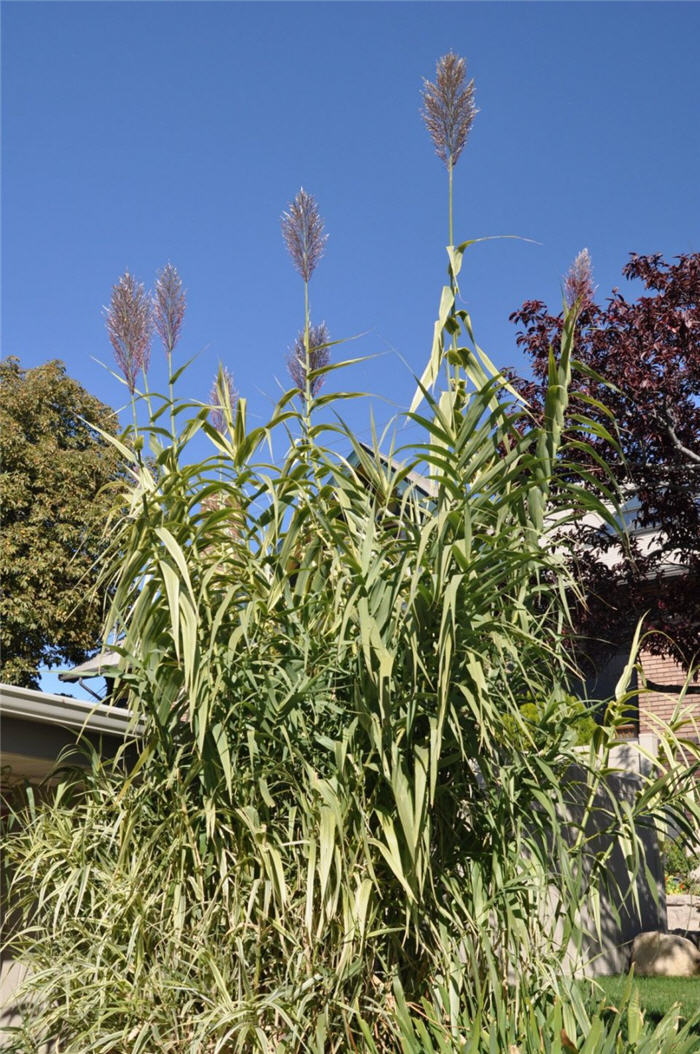| Botanical Name: Erianthus ravennae | |
| Common Name: Ravenna Grass |

-
Anatomy
-
Culture
-
Design
Plant Type
Perennial, Grass
Height Range
6-12'
Flower Color
Pink, White
Flower Season
Summer, Fall
Leaf Color
Green, Purple
Bark Color
n/a
Fruit Color
n/a
Fruit Season
n/a
Sun
Full, Half
Water
Low
Growth Rate
Fast
Soil Type
Sandy, Clay, Loam, Rocky, Unparticular
Soil Condition
Average, Rich, Poor, Well-drained, Dry
Soil pH
Neutral, Basic
Adverse Factors
n/a
Design Styles
English Cottage, Japanese, Meadow, Mediterranean, Ranch, Spanish
Accenting Features
Silhouette, Specimen
Seasonal Interest
Winter, Summer, Fall
Location Uses
Background, Perennial Border, Shrub Border, Foundation, Walls / Fences
Special Uses
Cut Flowers, Hedge, Screen, Small Spaces
Attracts Wildlife
Birds
Information by: Stephanie Duer
Photographer: Susan Frommer
Photographer: Susan Frommer
-
Description
-
Notes
Ravenna grass is a fabulous ornamental grass, from its striking silhouette and silky plumes to its fall color and winter presence. Emerging mid to late spring, it clumping, upright arching mound of foliage quickly reaches 3 to 5 feet. Plume stalks begin to emerge, with silky plumes emerging mid to late summer. As temperatures cool, plumes turn pinkish and foliage takes on burgundy hues. Very winter persistent. Winter birds will love the seeds. Grows 8 to 10 feet tall and 3 to 4 feet wide. Plumes are lovely in vases.
Grow in full sun and well drained soil. Will grow in gravelly, sandy-loam, clay-loam, or clay. Cut back in late winter (see Guides). Deer and rabbit resistant; birds love the seeds.